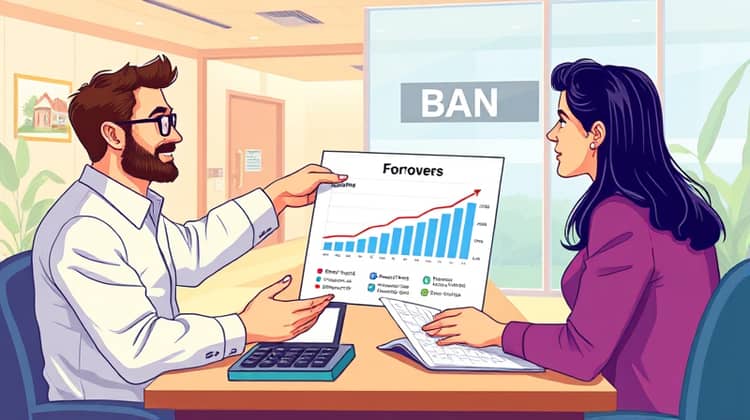Collateral Secrets: Unlocking Better Loan Terms with Your Assets

Understanding collateral and the types associated with it can open doors to better financing options, providing borrowers leverage in negotiations for loan rates and terms. This article aims to unravel the complexities of collateral, exploring its critical importance in the loan landscape. Harnessing the power of your assets can lead to both financial opportunities and responsibilities, hence knowing the ins and outs is paramount. By grasping these secrets, you can make informed decisions to unlock better loan terms and manage risks effectively.
What is Collateral?

Collateral refers to an asset that a borrower offers to a lender to secure a loan. In the event the borrower defaults on the loan, the lender has the legal right to take possession of the collateral to recover their losses. This makes collateral vital for lenders, as it reduces their risk and provides an added layer of security for the borrowed funds.
Typically, collateral can take various forms, including real estate, vehicles, savings accounts, or other valuable items. Having collateral often significantly enhances a borrower's chances of obtaining a loan, as it assures the lender they have recourse in case of non-repayment.
The concept of collateral dates back centuries as a method of reducing risk in lending practices. Today, understanding what constitutes collateral and how it is valued is crucial for individuals looking to improve their borrowing prospects.
Types of Collateral

Several types of assets can serve as collateral. Recognizing the various forms of collateral can empower borrowers to leverage their assets effectively when seeking loans. Some common types include real property, inventory, equipment, and personal property.
Understanding which assets qualify as collateral can help in choosing the right options while applying for a loan, ensuring better terms and lower interest rates. It's essential to evaluate the value of your assets and how they relate to the amount you wish to borrow.
- Real estate (homes, land)
- Vehicles (cars, boats)
- Savings accounts or cash deposits
- Inventory and equipment
Each type of collateral comes with its own risks and rewards, so it's wise to consider multiple options and consult with financial experts if necessary.
Why Collateral Matters

Collateral matters because it directly influences the lender's level of risk when extending a loan. With collateral, a lender's security interest increases, which can lead to more favorable loan terms for the borrower, including lower interest rates and longer repayment periods.
In an unsecured loan scenario, lenders face significant risks because there is no asset tied to the loan. Consequently, they tend to offer higher interest rates to compensate for this risk. Thus, collateral can be a game-changer in loan negotiations, providing leverage to the borrower.
Secured vs. Unsecured Loans

Secured loans are those that require collateral to back the borrowed amount. This means that the asset provided will secure the loan, and if it isn't repaid, the lender can reclaim the asset. They often come with lower interest rates, reflecting the reduced risk for lenders.
On the other hand, unsecured loans do not require collateral. As a result, getting an unsecured loan often involves stricter credit assessments, limited amounts, and higher interest rates. It's critical for borrowers to understand these distinctions when considering their financing options.
Secured Loans
Secured loans offer several advantages, making them an attractive option for many borrowers. Since these loans are backed by collateral, lenders typically provide better terms, which may include lower interest rates and flexible repayment options.
Common examples of secured loans include mortgages and auto loans, where the property or vehicle serves as collateral. This structure helps both borrowers and lenders in the borrowing process.
- Mortgages (property as collateral)
- Car loans (vehicle as collateral)
- Home equity loans (equity in property)
- Secured personal loans (various assets as collateral)
For borrowers, using assets as collateral can be a strategic move to access funds that they might otherwise struggle to obtain.
Unsecured Loans
Unsecured loans present an alternative for borrowers who may not want to risk their assets. These loans do not require any collateral but often come with higher interest rates due to the greater risk faced by lenders. That's why lenders usually rely heavily on the borrower's creditworthiness when issuing unsecured loans.
Examples of unsecured loans include personal loans, student loans, and credit cards. Borrowers need to understand the implications and costs associated with unsecured borrowing, especially if rates and fees become a financial burden.
How Collateral Affects Loan Terms

The presence of collateral can significantly impact the terms of a loan. Lenders may offer more favorable conditions—such as lower interest rates and longer repayment periods—when collateral is involved, as it lowers their potential risk. This principle of risk management is fundamental in lending decisions.
Moreover, the value and type of collateral can determine the amount a lender is willing to extend. If the collateral is perceived as valuable and stable, it can lead to better funding opportunities for the borrower.
Tips for Using Collateral

When leveraging collateral for loans, it is important to know its value accurately. Seek professional appraisals if needed and ensure you are not overestimating your assets, as this could lead to unfavorable loan decisions or terms.
Diversify the types of collateral you’re willing to offer. This can include tangible items like vehicles and intangibles like future income or accounts receivable, which can create stronger applications for loans and mitigate risks.
Lastly, ensure to read lending terms carefully. Understanding how the collateral will be treated is crucial, particularly if you face challenges in repayment, to prevent unwanted loss of your assets.
Risks of Using Collateral

While using collateral can provide several benefits, it also comes with inherent risks. The most significant risk is the potential loss of the asset pledged as collateral if you default on the loan. Losing a house or vehicle can significantly impact your financial status and personal life.
Further, leveraging too much collateral may lead to an overextension of credit. It can create a cycle of debt that becomes increasingly difficult to manage, particularly if personal finances are strained unexpectedly.
- Loss of the asset pledged as collateral
- Increased financial burdens
- Potential damage to credit scores
- Overextension of credit
Being aware of these risks is crucial for making informed borrowing decisions and taking the appropriate steps to protect your financial future.
Conclusion

Collateral plays a central role in determining loan availability, terms, and costs. By understanding how collateral works, borrowers can leverage their assets effectively to access better financing options. Both secured and unsecured loans have their merits and associated risks, and thorough knowledge of both can lead to better loan management.
As you explore collateral opportunities, remember to gauge carefully the type and value of your assets, and align them with the specific loan products you are pursuing. Always prioritize understanding the implications of leveraging your assets to inform your financial decisions.
In this dynamic financial landscape, being proactive and informed about collateral can make the difference in unlocking better loan terms and securing your financial future.






